When considering the best design for a workplace, the placement of the furniture is just as important as the furniture itself. The flow of foot traffic, the efficiency and comfort of workstations, and the overall feel of the environment all work in tandem to create a space that feels right — or wrong. Let’s explore five of the most common mistakes that come up when planning a workspace layout and the best ways to avoid them.
1. A Lack of Storage
Not considering where your team is going to keep their things is a more common oversight than you might think, and especially in open floor plans where benching is the primary mode of seating. However, it can even be an issue when planning cubicles and private areas, when only the bare minimum storage options are included in the design, often due to a lack of space. But if a workstation lacks storage, it can quickly become crowded, messy, and cramped, making it inefficient and unpleasant to work in.
There are so many solutions available to address this issue regardless of how much room a workstation provides, from overhead storage to credenzas, full-length cabinets, mobile pedestals, and more.
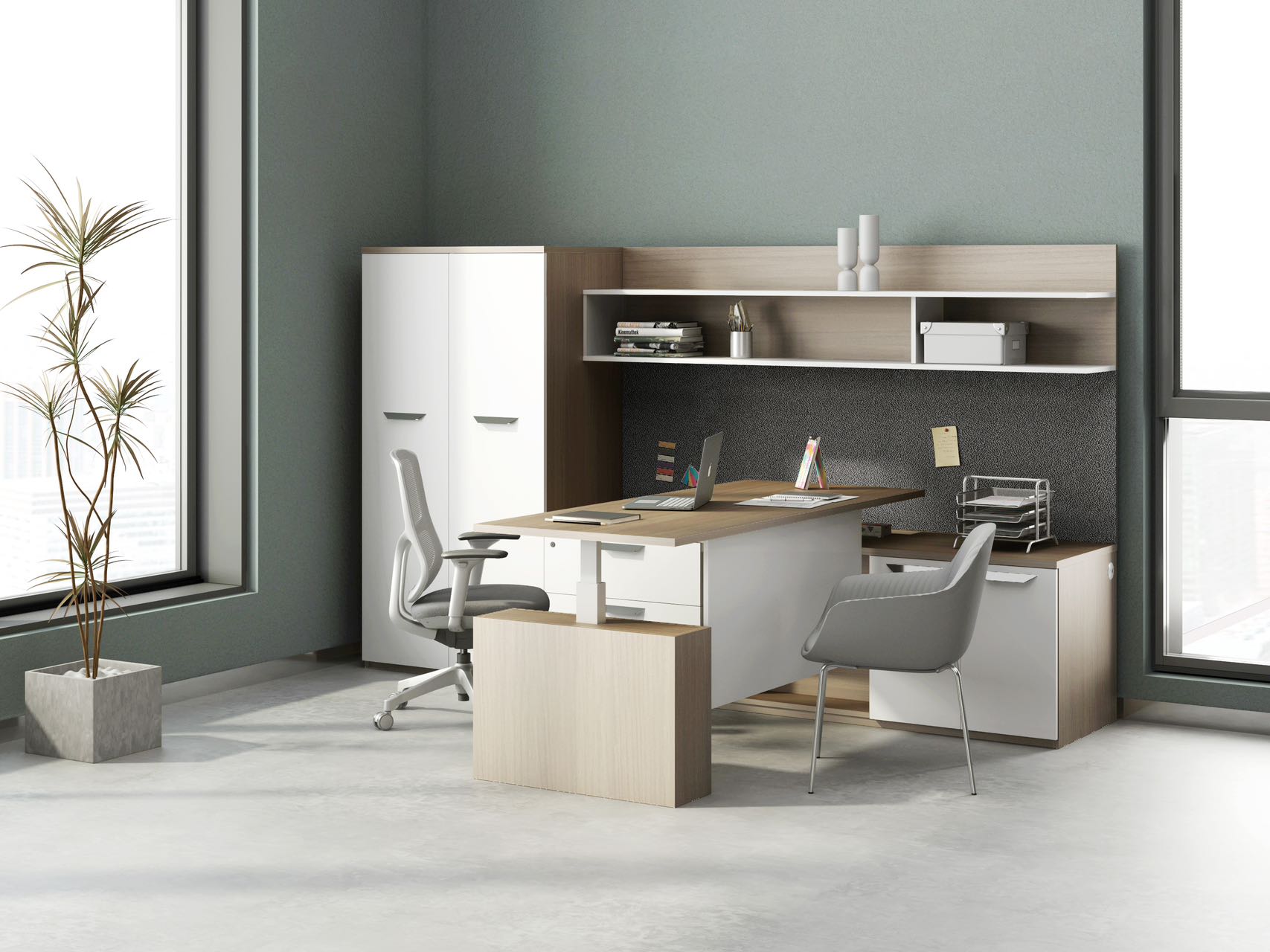
Our Dash line demonstrating just why it’s our go-to solution for storage options.
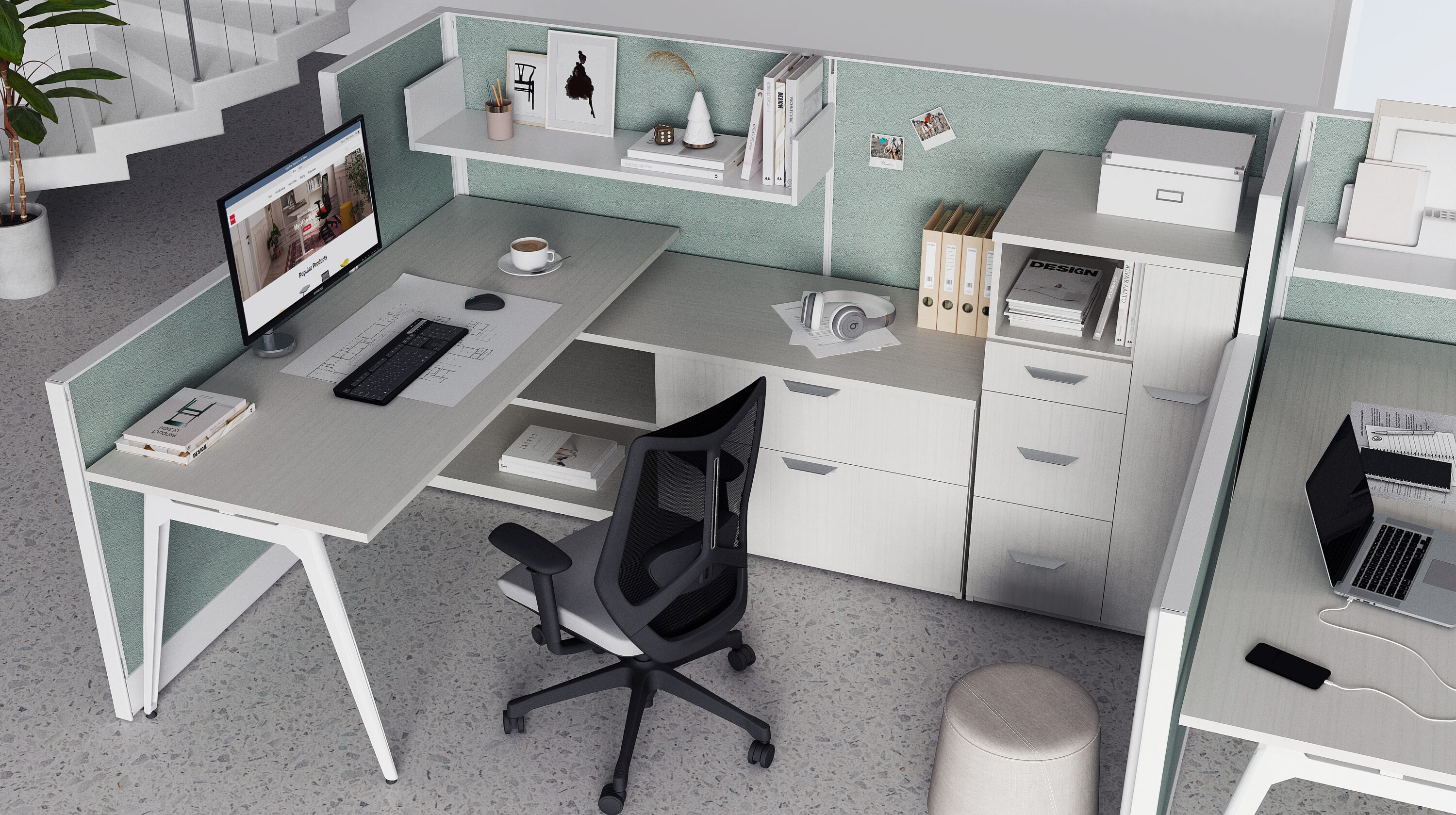
Even small spaces can be optimized for storage.
Consider adding overhead storage with either pneumatic lifts or sliding doors to make it easy for your team to reach what they need while keeping things off of desktops and out of sight. Open shelving is also a great option for easy, instant access to things without dealing with doors. Credenzas, towers, and hutches provide ample room for supplies, documents, laptops, books, and even coats and bags. And in workstations with benching, mobile pedestals are perfect for just the right amount of storage to keep desks clear and open.
2. Creating Break Rooms and Breakout Areas No One Enjoys Being In
Whether it’s time to dig into lunch or a brainstorming session, your team wants a comfortable, welcoming place to sit and chow down or collaborate. But when the chairs are hard, the rooms are sterile, or there isn’t enough seating to accommodate more than a couple people at a time, these spaces feel uninviting and become unused wastes of space that no one wants to utilize.

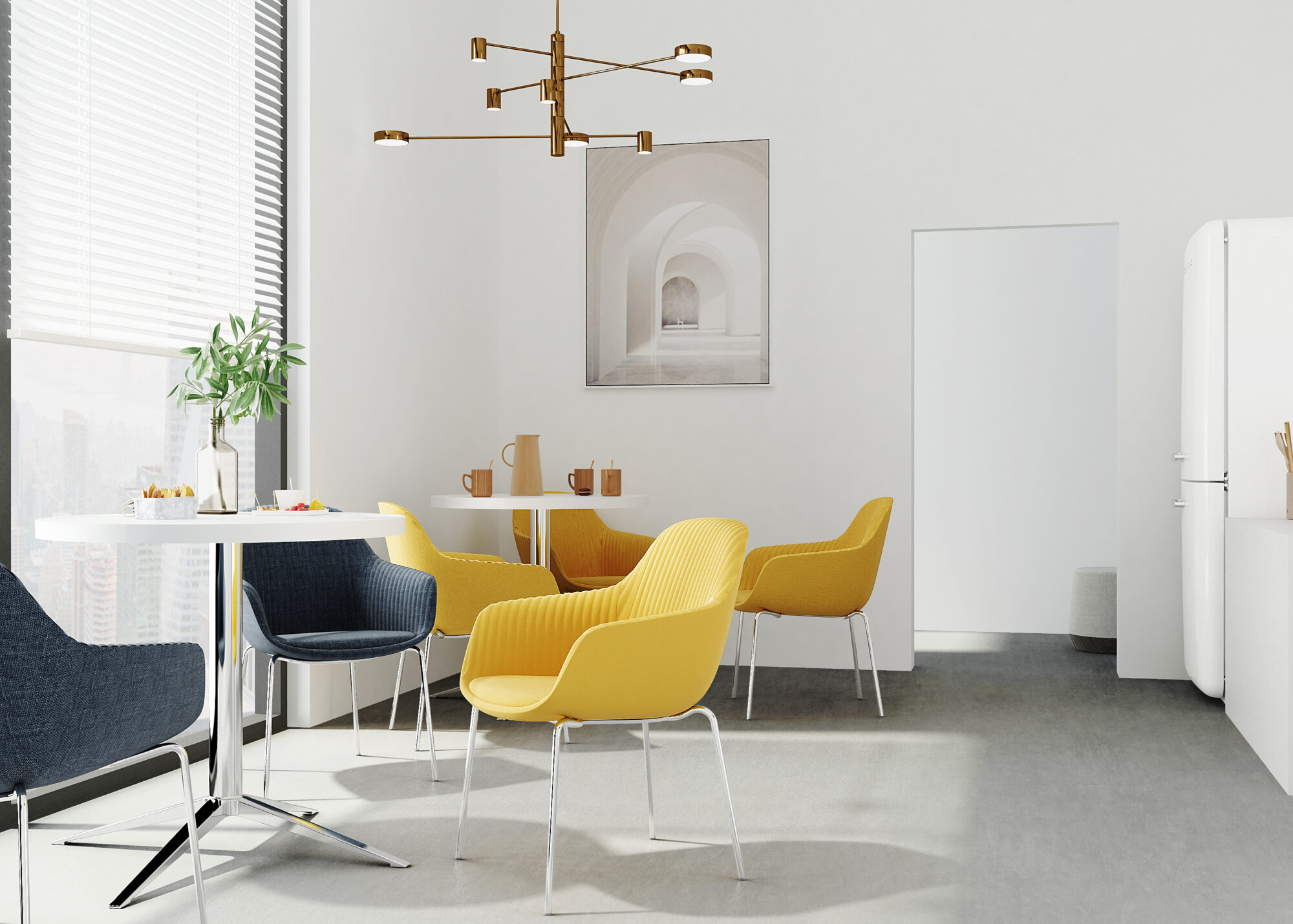
Introduce some color into these spaces, even if it’s just a pop with soft seating, for a much-needed boost of personality and style. Try cushioned chairs in the break room as an alternative to hard seating to help the space encourage relaxation and respite from the workday. Also make sure tables aren’t cramped — even better if they can seat 2-3 people to make socializing easier. Breakout areas should provide as ample seating as the area can provide without being too crowded to allow teams to gather, chat, and work together effectively without anyone having to roll over a task chair or sit on the floor. Mix things up with an assortment of stools, chairs, and a couch or smaller sofa to provide options. And don’t forget the greenery! It’s not only easy on the eyes, it helps make the space feel less rigid and cold.
3. Overlooking the Reception Area
You don’t get a second chance at a first impression, so don’t treat your reception area (if you have one) as an afterthought. Guests should feel welcome as they walk through the door and waiting areas should be comfortable, inviting areas to receive them. Coffee and end tables are a must for placing reading material. The desk itself is a statement, likely the first thing to draw your visitors’ eyes as they enter, so make sure it’s reflective of your design preferences and something you feel represents your business well. It should provide enough space for your guests to sign in, sign documents, etc. and for your receptionist(s) to work comfortably behind the desk.
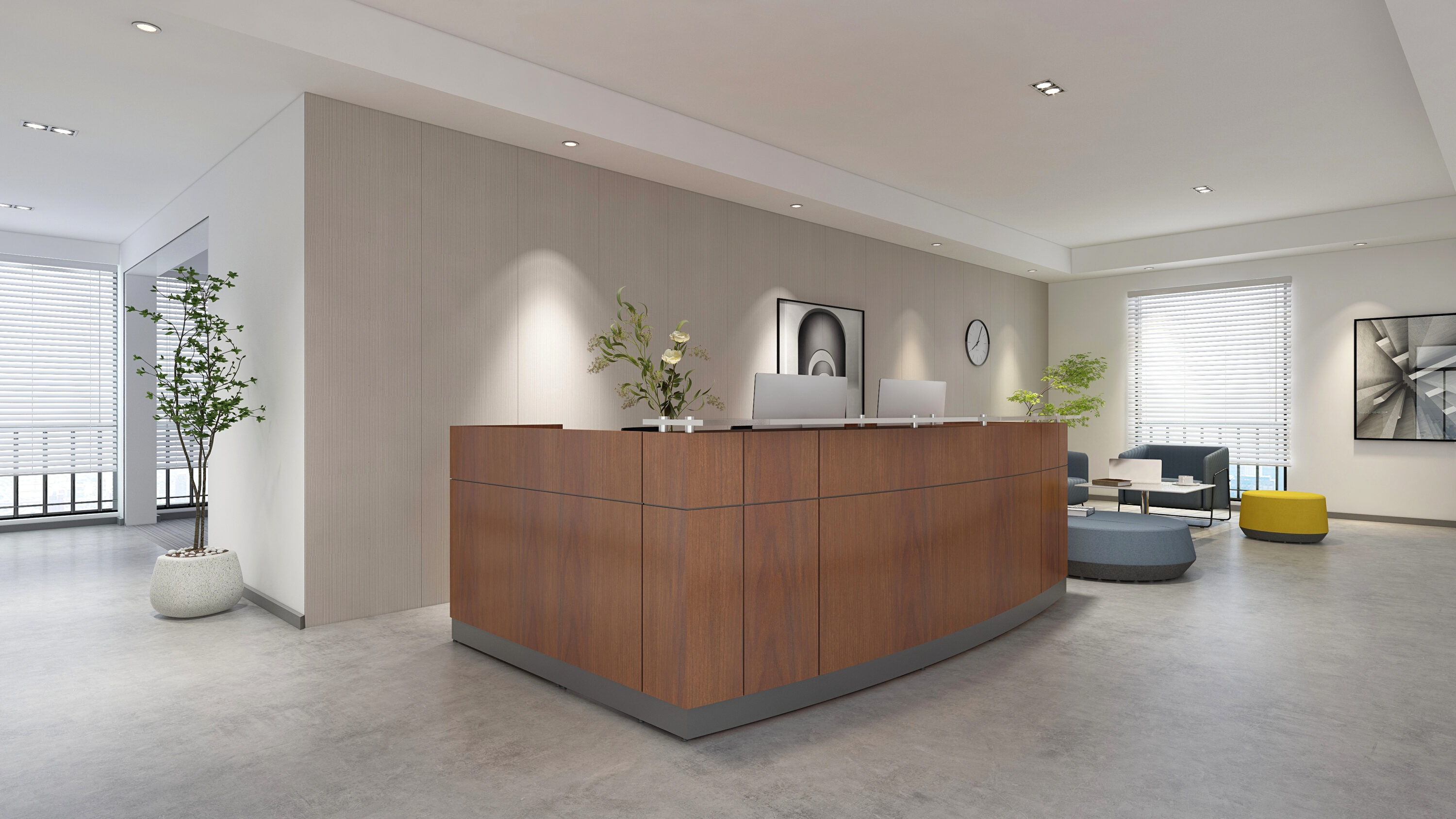
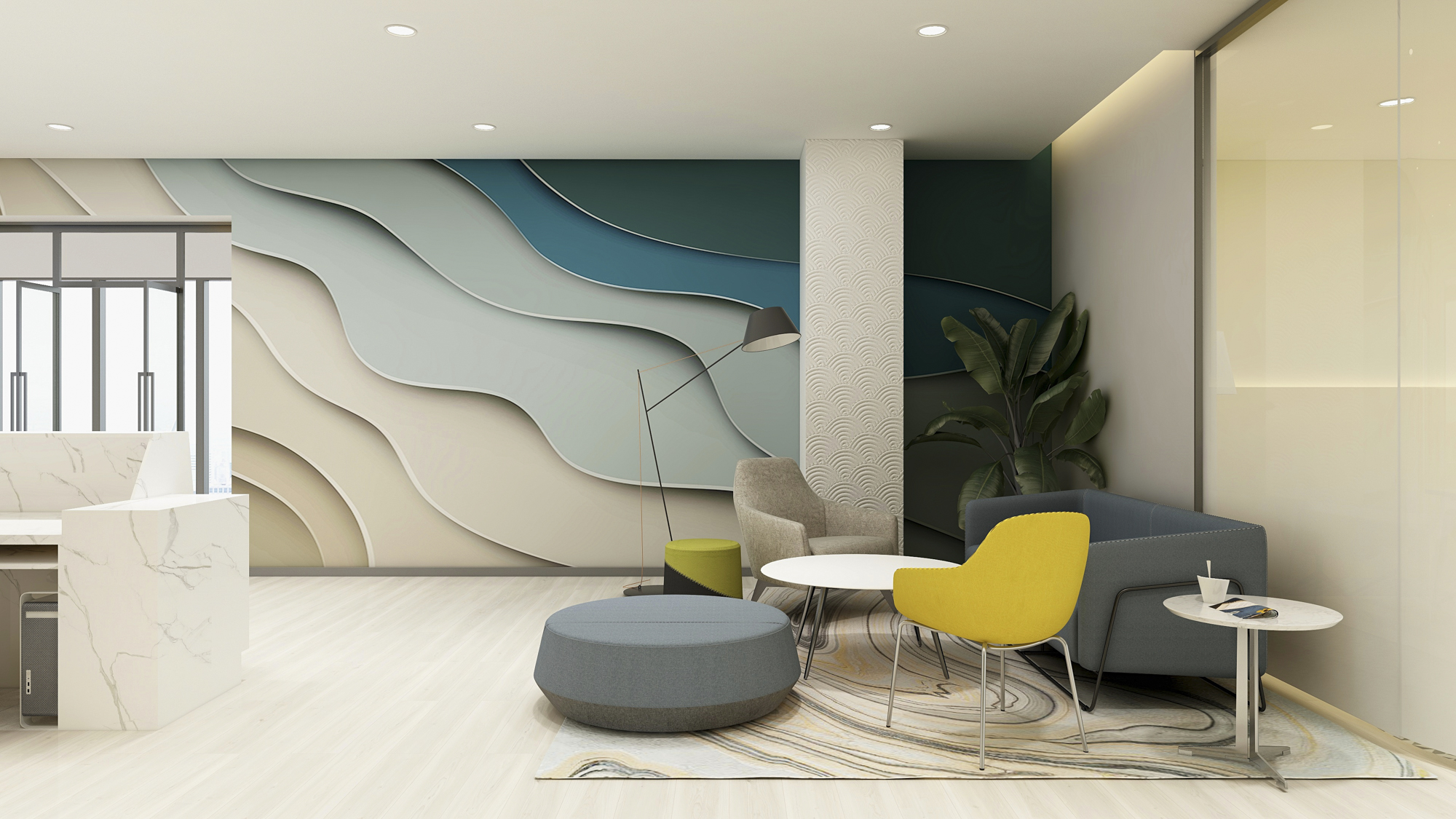
4. Not Considering Noise Reduction or the Need for Privacy in Open Offices
Open offices are great in that they bring everyone together and make everyone easily accessible to one another. Open offices can also be challenging places to work in — because they bring everyone together and make everyone easily accessible to one another. Your team will need areas for calls, focus time, and private conversations, so design an environment that can accommodate the open flow of foot traffic while providing places for people to move to when they need some space.

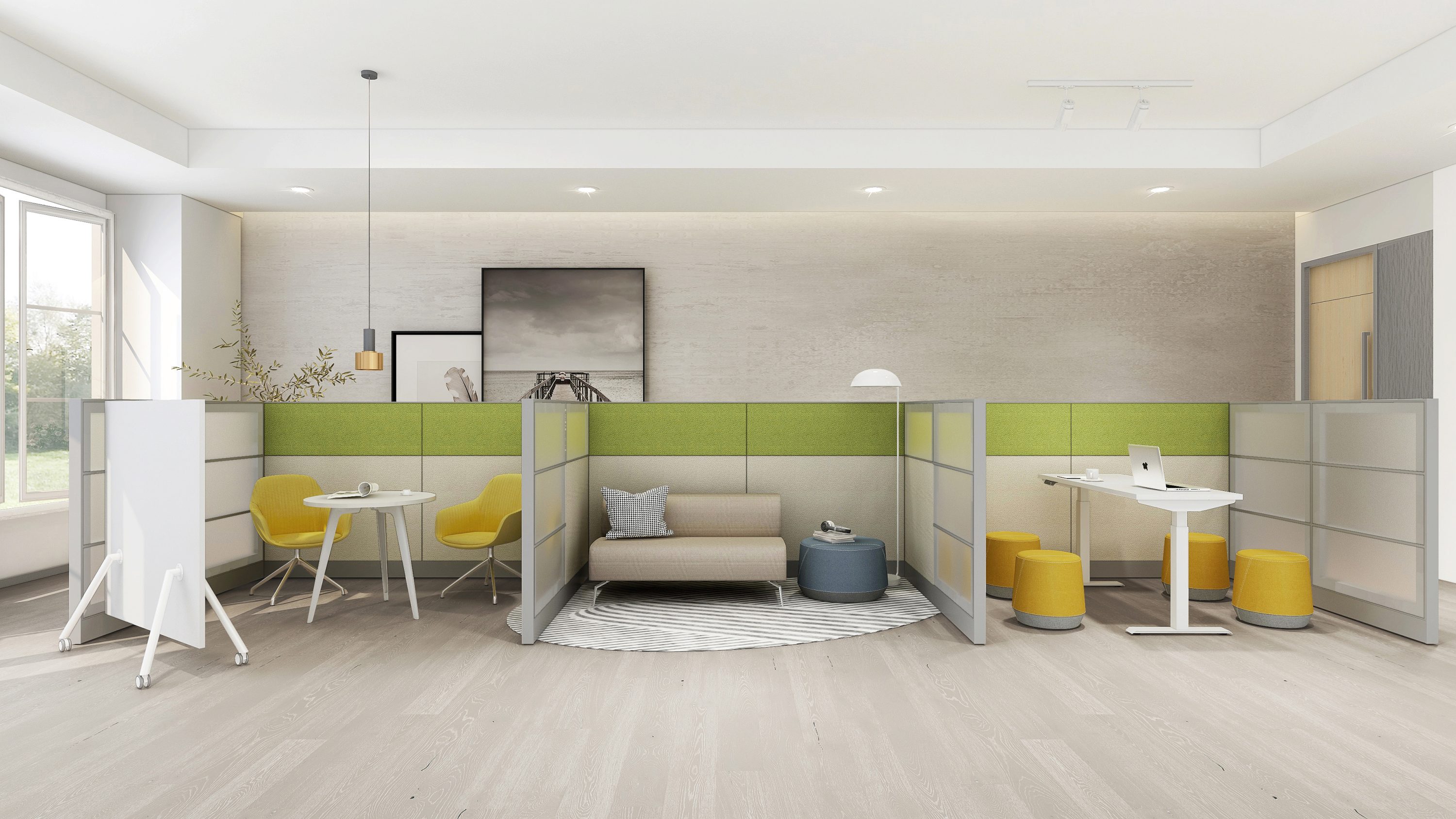
Acoustic booths cut sound and provide privacy, whether for a short call or an extended period of work where alone time is necessary. Creating division with free standing storage options provides double the benefits, while breakout areas allow teams to meet and collaborate without disturbing their colleagues at their desks. Panel systems can create small, cozy spaces for work or lounge, while privacy panels at height-adjustable desks can make them feel more personal and enclosed.
5. Not Planning with Scalability in Mind
If you foresee significant growth in your company’s future, you’ll likely need to do some rearranging of your layout as you add new members to your team. If panels are part of your design, be sure to choose systems that are versatile, customizable, and easy to move around and reconfigure as needed. If you’re working in a small or multipurpose space, consider tables and chairs that are simple to roll around and set up when in use and stack and store when they’re not. Growing your team should be something to look forward to and simple to accommodate, and that starts with furniture and a layout that make it simple to change things up.

Our Interra system makes in incredibly easy to change up your workstations as your team’s needs change.
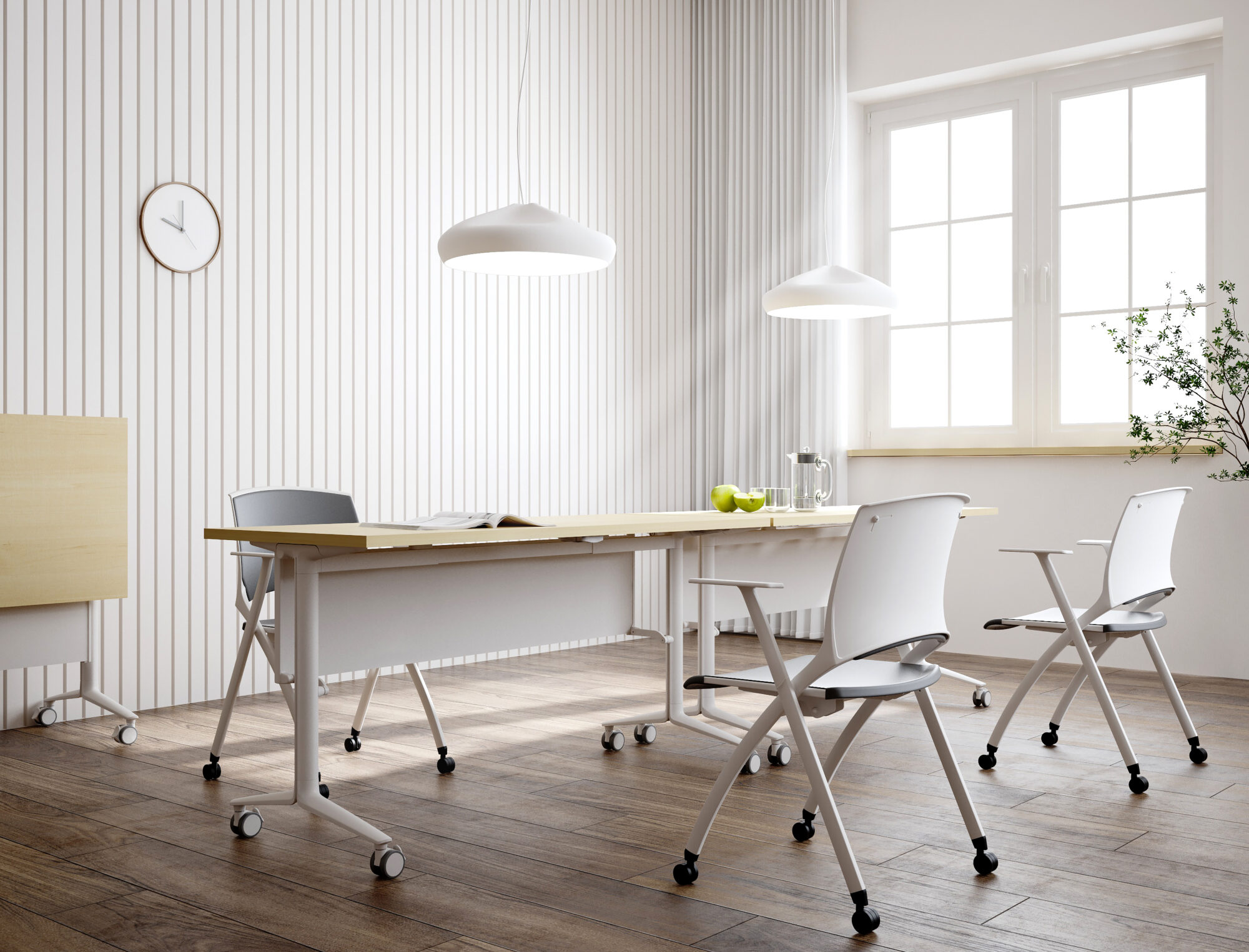
The Lune Training Table and Soleil Nesting Chair are perfect for small and/or multipurpose workspaces.
There are a lot of moving parts and both present and future concerns to consider when designing the layout of your workspace. But ensuring from the start that the small details don’t fall through the cracks will help you create a comfortable, welcoming, efficient workplace that you and your team will enjoy being in every day. Ready to start bringing your own vision to life? Let’s connect today.

